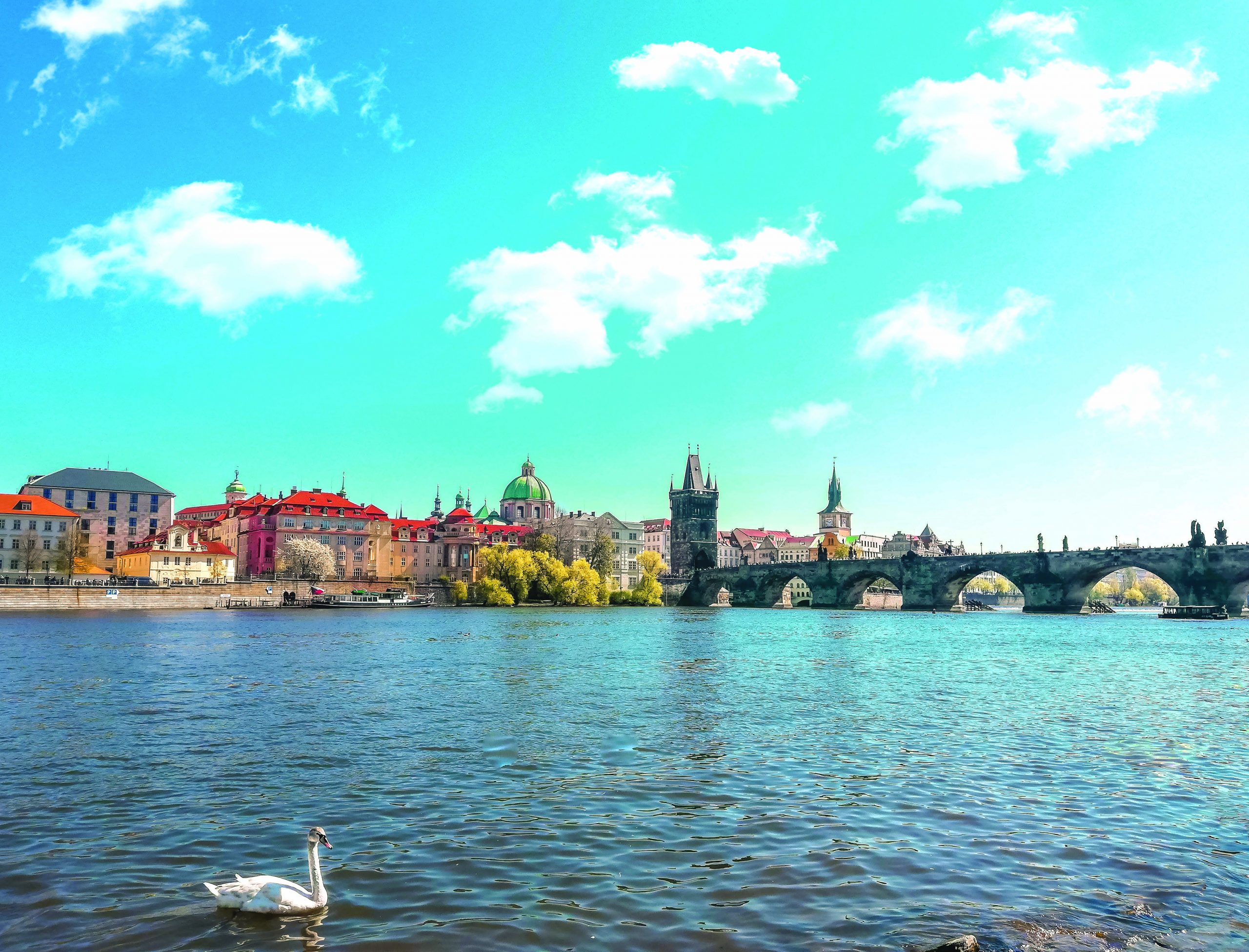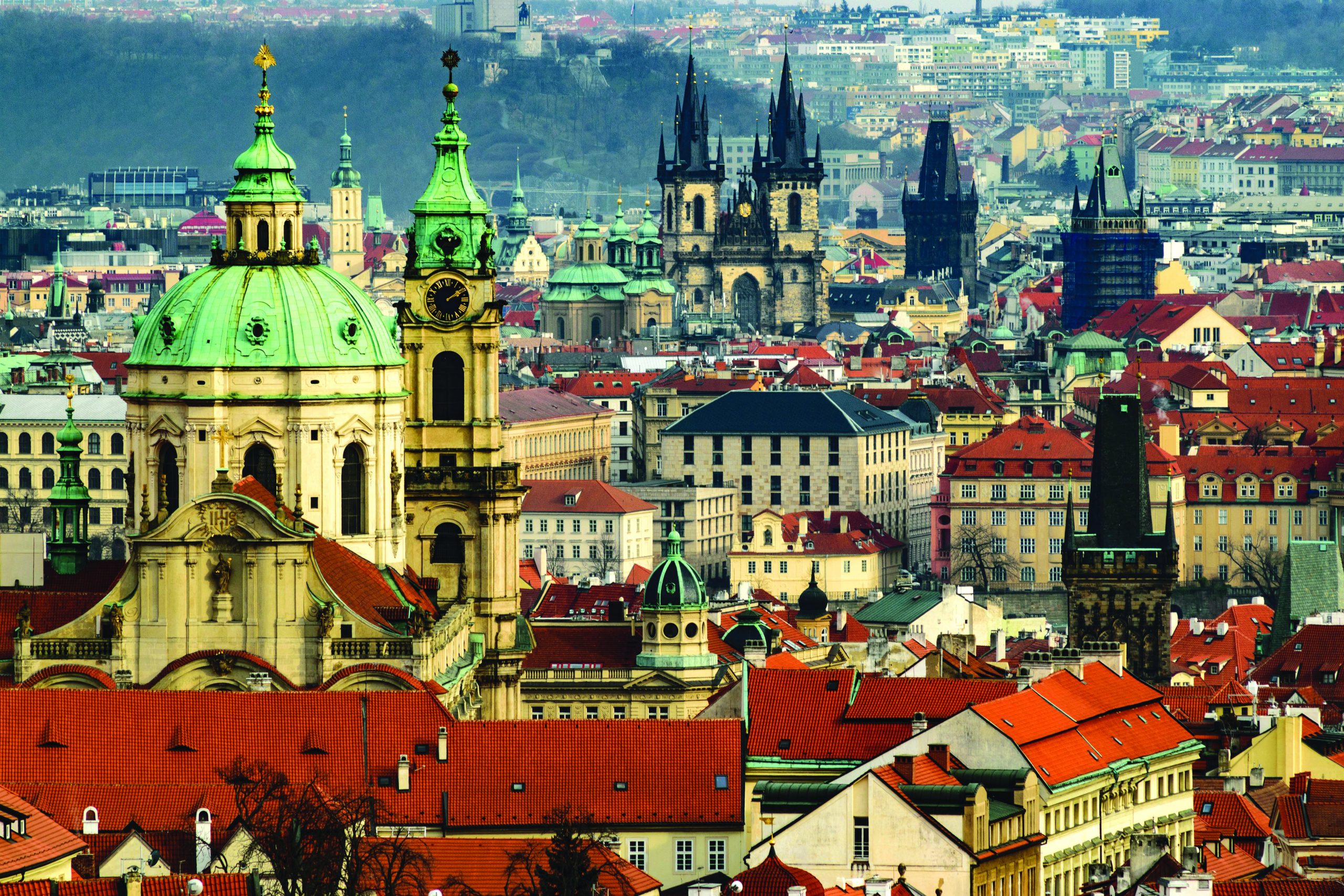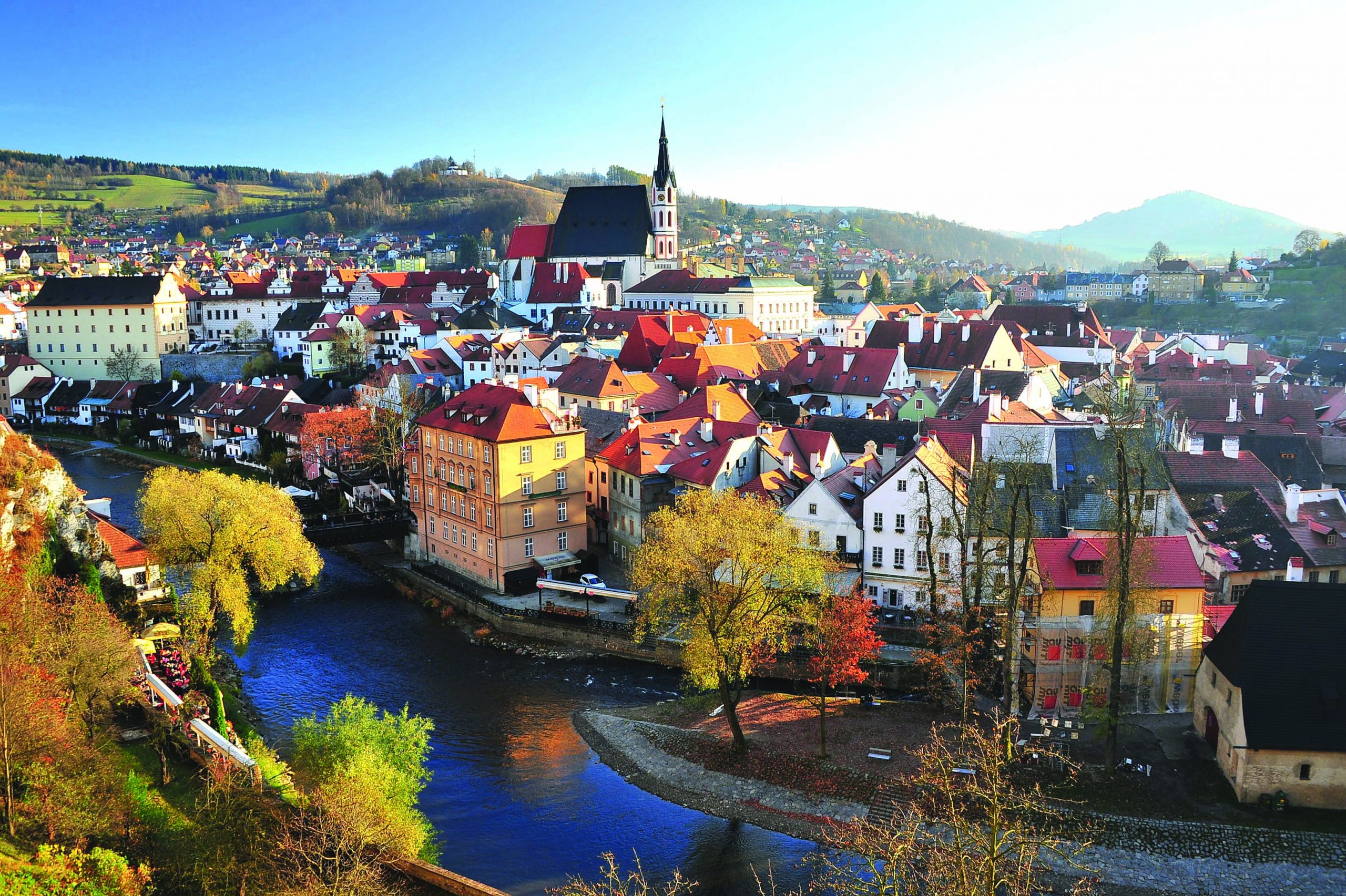Multiple charms of Eastern Europe’s most magical city
After its recent emergence from the stifling shadow of the defunct Soviet Union, Prague has become one of the most popular holiday destinations of Europe. Offering historic sites, architectural marvels, charming gardens, classical concerts, art galleries and museums, the city is a great educational experience

Once the proud epicentre of Europe, the Czech Republic, which borders Slovakia, Austria, Germany, and Poland, has some unique records to its credit — the world’s largest number of marked walking paths aggregating 37,000 km; the largest stone bridge; maximum number of castles per square mile worldwide; the highest per capita beer consumption and the heaviest concentration of Unesco heritage sites. Add to that its magical capital Prague, arguably the world’s most beautiful and romantic city.
With its heritage architecture untouched by natural disaster or war, few other cities in Europe are as eye-pleasing as Prague (pop. 1.3 million) which straddles the winding River Vltava. Boasting thousands of domes, cupolas, spires, and pinnacles, which speckle its unique skyline, Prague is the revered capital of the independent Czech Republic (pop. 10 million), freed from Nazi (1938-45) and Soviet (1945-89) yoke.
Despite its turbulent history, Prague retains much of its medieval grandeur with streets enriched with gothic, baroque and renaissance buildings, and monuments which have escaped the vanities and excesses of post-war redevelopment and invest this 1,140-years-old city with its distinctive character.
Little wonder that after its emergence from the stifling shadow of the former communist regime of the Soviet Union, Prague has become one of the most popular holiday destinations in Europe abounding in historical sites, architectural marvels, winding cobblestone streets, horse-drawn carriages, old-fashioned street lamps, charming gardens, classical concerts, intimate cafes and restaurants, and splendid art galleries and museums.
Especially for students of history, architecture, art and music, Prague is a great education experience. Student tourists have an added advantage since they get sizeable entry fee discounts in tourist hotspots, public transport and students’ hostels.
Until 300 BC, the area that is now the Czech Republic was inhabited by Celtic tribes and later by Germans who were pushed west to Germany by Slavonic tribes. Subsequently the Great Moravian Empire of 800-900 AD was centred in this region. In the 14th century began the biggest expansion of the state under the reign of Charles IV of Bohemia, when Prague was declared the capital city of the Holy Roman Empire. In the 16th century, the kingdom of Bohemia fell under the rule of the Hapsburgs. Their AustroHungarian Empire lasted until the end of World War I when in 1918, the independent Republic of Czecho-Slovakia was established.
However, the independence of Czecho-Slovakia was shortlived. In 1938 following the infamous Munich Pact signed by Germany’s Nazi dictator Adolf Hitler and British prime minister Neville Chamberlain, Czechoslovakia was annexed by Nazi Germany. The defeat of Nazi Germany in World War II brought little respite for this landlocked country in the heart of Europe. Nazi rule was replaced by the iron hand of the Communist Party of the Soviet Union, when Russian troops marching towards Berlin overran Czecho-Slovakia which was transformed into a nominally independent Soviet satellite ruled by a puppet communist regime.
Only 40 years later after the fall of the Berlin Wall in 1989 and implosion of the Soviet Union did Czechoslovakia regain its independence. Pressure for Slovakian independence resulted in the country splitting into two independent republics — the Czech Republic and Slovakia (pop.5.5 million). Both countries were recently admitted into the European Union.

Prague
Walking down Prague’s historical centre, which hosts 14 Unesco World Heritage sites, is to experience a tour of architectural history with its well-preserved Romanesque, gothic, baroque, renaissance, neo-classical, art deco, cubist, and modern architecture on display. Local residents take pride in reminding visitors that this historic city was in the forefront of the European avant garde art movement for much of the last century, boasting a cubist movement second only to Paris, and between the wars experiencing a modernist architectural flowering to rival the German bauhaus.
Wenceslas Square. The downtown central business district of Prague, is where all the action is. In 1968, it was the focal point of the Soviet invasion of Czechoslovakia under the Warsaw Pact and in 1989, it was the site of Vaclav Havel’s Velvet Revolution. Down the street is the Theatre of the Estates, one of the theatrical jewels of the European Enlightenment where Wolfgang Amadeus Mozart premiered his most famous Opera Don Giovanni in 1787. Close to it is the neo-classical State Opera built in 1888 for Prague’s German-speaking elite by architects Fellner and Hellner, who also built Vienna’s grand State Opera House.
Wenceslas Square is the natural centre of the city. Initially a horse market, in 1848 the square was renamed in honour of St. Wenceslas — patron saint of the Czechs — whose monumental bronze equestrian statue dominates the facade of the National Museum, an imposing Neo-Renaissance building. Designed by Josef Schulz with a Pantheonic central space and embellishments by renowned Czech artists, the museum was built between 1885-1890.
Prague Castle. The jewel in the crown of the city, this spectacular and opulent Castle is the largest medieval castle complex in Europe. It served as the power centre of Czech princes and kings, and of the bishopric of the Roman Catholic Church. Built by Prince Borivaj in the 9th century, the castle houses three churches, a monastery and the palace surrounded by fortifications.
Situated amidst the castle’s sprawling 18 acres, is the St. Vitus Cathedral. This gothic-style building, dark with age and solemnity, is not only the principal church of the castle, but also the spiritual centre of the country. Of particular interest in the castle complex is the National Cultural Monument of the Czech Republic which contains immensely valuable art relics, historic documents and the Czech crown jewels. Also on the castle premises is St. George’s Basilica, which hosts grand classical music concerts in summers.
Since 1918, Prague castle has been the seat of the president of the Czech Republic and the historical and political centre of both the city and state. There’s an impressive changing of the guard ceremony before the palace gates every hour, and the noon ritual is accompanied with considerable fanfare. A walk about in the castle complex is a delightful experience of stepping back hundreds of years in time. Shops, restaurants and cafés line the quaint, cobbled streets en route to the castle, which can also be accessed by tram.

Lesser Town. Situated near the outer bulwark of Prague castle is Mala Strana or Lesser Town where time has stood almost still, with only a few buildings having been constructed here since the end of the 18th century. Lesser Town boasts proud baroque palaces and ancient gothic style houses. Some of its most imposing buildings are the baroque Church of St. Nicholas, and the Lichtenstein and Kaiserstein palaces.
Charles Bridge. At the foot of Prague Castle is the historic Charles Bridge, which connects the Castle district with the Old Town and is the city’s most famous landmark. Spanning the River Vltava which winds through the city, this 651-year-old, 520-metre-long medieval stone bridge is built on 16 pillars and gates with towers flanking both ends. Decorating both sides of the railing are beautiful baroque statues of prominent citizens, carved and erected by famous Bohemian sculptors.
Closed to automotive vehicles, Charles Bridge is ideal for a casual stroll within Prague’s historic district. In addition to classical statues, there are dozens of live artists, craftsmen, vendors and musicians parading the bridge, to the delight of visitors. From the bridge, you could embark on an inexpensive and relaxing river cruise of Prague, which affords fairy tale views of this majestic city.

Old Town. Adjacent to the Charles Bridge, in the heart of Prague is the Old Town and its bustling, enchanting Central Square, the most attractive open area in Prague and a popular hangout of youth. Branching off from the square are narrow, winding streets and arched alleyways that originated in the middle ages. The Old Town Square, which includes the Town Hall with its famous Astronomical Clock Tower, the Church of Our Lady Before Tyn and the Jan Hus Monument, has witnessed many a crucial event during the centuries of Bohemian statehood.
Jewish Quarter. Sited between the Old Town Square and Charles Bridge is the Jewish Quarter, aka Josefov. This is the only Central European Jewish ghetto that survived the holocaust, and was immortalised in the words of Franz Kafka, the troubled and enigmatic writer who was born in Prague. “In us all it (the Jewish Quarter) still lives — the dark corners, the secret alleys, shattered windows, squalid courtyards, rowdy pubs, sinister inns… The unhealthy old Jewish Town within us is far more real than the hygienic town around us,” he wrote.
The major tourist draws of the Jewish Quarter are Maiselova Street, the Hebrew Clock Tower atop the Jewish Town Hall (whose clock with Hebrew numbers runs backwards), and the birthplace (now a museum) of Franz Kafka, the founding father of 20th century fiction, whose evocative and disconcerting novels encapsulate the mystery and gloom of his childhood environs.
Apart from its architectural heritage and rich history, Prague also offers a vibrant cultural and social life with Wenceslas Square and the Old Town Square buzzing with art galleries, theatres, music halls, restaurants, charming wayside cafés, bars, ale-houses and clubs. Shopping is a great attraction with streets and squares teeming with shops showcasing world famous Bohemian hand-painted crystal as well as cut Czech crystal — highly popular with tourists.
An acclaimed centre of western classical music, Prague hosts some of the world’s greatest opera companies and orchestras. Czech composers and conductors Bedřich Smetana, Franz Liszt and Antonín Dvořák were loved and revered in this cultured city, as was Mozart who spent many years in Prague.
Prague extends a varied night life for visitors to chill and let their hair down with a bewildering choice of beer halls, ale-houses, bars, night clubs, discotheques, restaurants and lively outdoor cafes. Moreover, the city is famous for its beer and brewing traditions and boasts its inimitable Pilsner beer, which has a history stretching back to 1118. Thanks to their quality and aroma, Bohemian hops are prized internationally. Little wonder Czechs down more beer per capita than any other nation.
For visitors from India, the Bombay Cocktail & Music Bar on the charming and romantic Dlouha Street, minutes from the Old Town Square of Prague, is one of the most popular nocturnal watering-holes, and ever since Shekhar Kapur kick-started the annual Bollywood Film Festival in Prague in 2003, Indian movies have become popular with citizens of this happening city.
Although May-October is climatically the best season for tourists, Prague’s New Year celebrations attract busloads of European tourists.
Excursions ex Prague
Karlovy Vary. A scenic drive of a mere 125 km through the picturesque west Bohemian countryside is Karlovy Vary (pop. 53,000) — globally renowned for its curative thermal springs, and its international film festival as also for Becherovka, the traditional Becher liquor produced from herbs. The town has become a hot spot for international celebrities, as besides spa treatments, it is also one of the four major cities of Europe which hosts a prestigious international film festival. Its sumptuous Grandhotel Pupp is a prominent centre of cultural activities and has hosted classical musicians of the likes of Bach, Wagner and Liszt among royalty, presidents, artists, scientists and film stars.
Cesky Krumlov. A three hour drive (170 km) from Prague, this is a heritage town, picturesquely situated above the meandering upper Vltava in southern Bohemia. Since 1992 it has been included on the Unesco list of World Heritage sites. The town is also well-known for its year-round music and film festivals, theatre performances and folk festivals.
Kutna Hora. An hour’s drive (85 km) east of Prague is the architecturally rich town of Kutna Hora. This ancient mining centre has an old and affluent tradition of silver mines and splendid gothic monuments. It was awarded the status of a royal mining town as early as the 14th century.
















Add comment